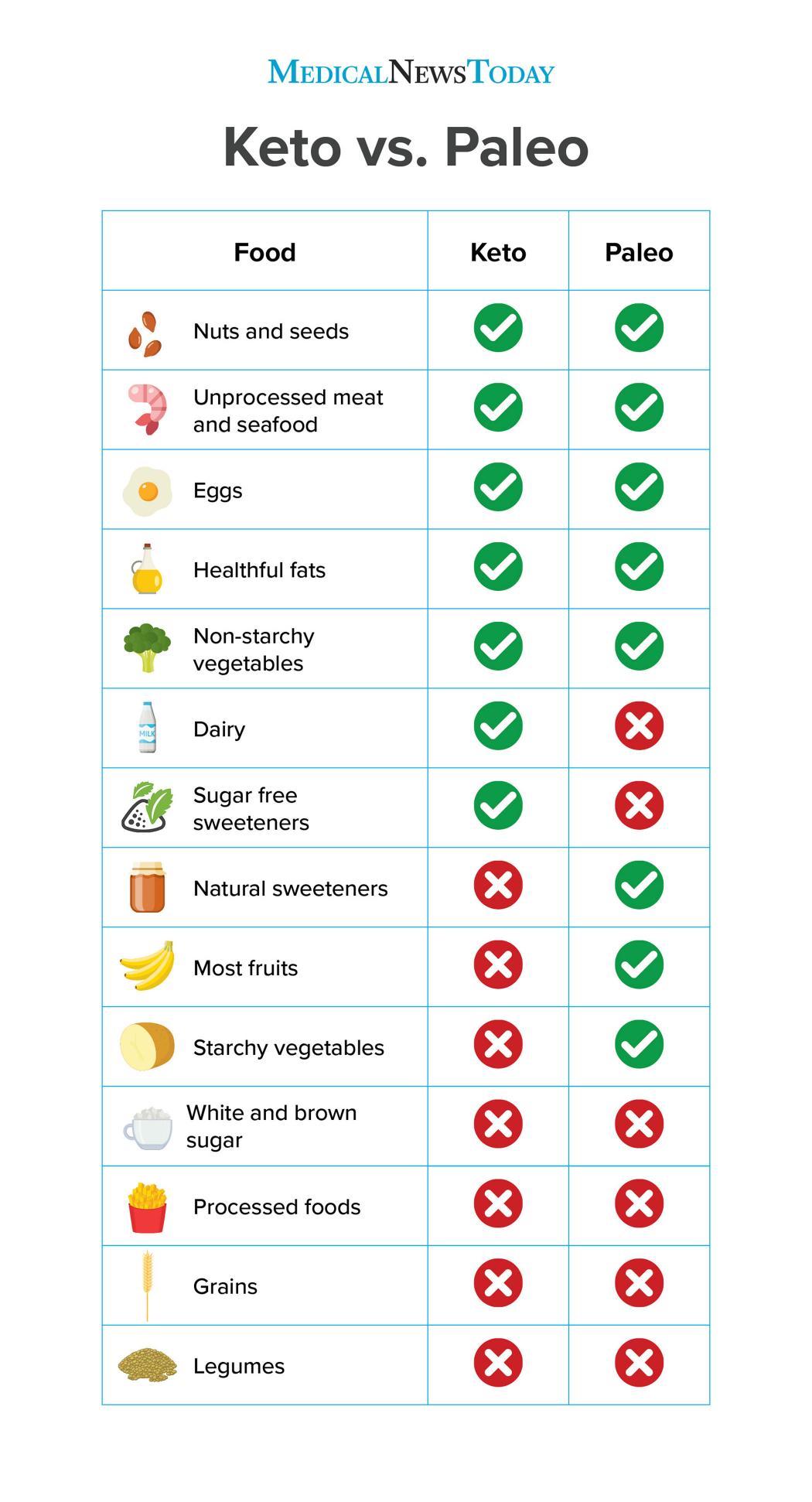Keto and paleo diets: What are the differences?
The keto and paleo diets are among the most popular diets today. They share some similarities, but there are also differences in the foods they allow, their effects on the body, and key health effects.
The ketogenic (keto) diet focuses on eating a particular balance of macronutrients. The goal is to enter a state of ketosis, where the body begins to burn fat for health or weight loss.
The Paleolithic (paleo) diet focuses on eating foods that humans would have eaten in the Stone Age. The goal is to eliminate modern processed foods for health or weight loss.
This article looks at the similarities and differences between the keto and paleo diets, including their benefits, food lists, and side effects.
The keto and paleo diets are two dietary options that aim to boost health, eliminate highly processed foods, and encourage weight loss.
Keto diet
A keto diet is an eating plan that focuses on eating lots of healthful fat, some protein, and minimal carbohydrates.
The body typically uses carbohydrates as fuel for energy. When a person does not get enough carbs, the body will start using up fat and some protein stores. In true ketosis, the liver will take stored fat and turn it into ketones, which the body then uses for energy. Reaching this state of ketosis is the goal of the keto diet.
Some believe ketosis is an efficient way to lose excess fat and to reduce the risk of problems, such as heart disease and diabetes.
The keto diet encourages and excludes specific foods. A person on keto cannot get their carbohydrates from grains or legumes. Their carbs must come from a keto friendly vegetable, such as leafy greens, or a small group of fruits, primarily berries.
Paleo diet
A paleo diet is a dietary plan that focuses on foods that humans ate during the Paleolithic era. Some people refer to it as the caveman diet or the Stone Age diet.
This diet strives to eliminate products made via modern food processing and farming methods. People who follow the paleo diet may choose foods that a Stone Age ancestor would have been able to hunt or gather and eat. The diet of a Stone Age person would have varied according to the natural resources available in their area.
Some people believe that the human body is not well adapted to modern-day foods. According to supporters of the diet, cutting out foods such as dairy, grains, and legumes can help a person lose weight and prevent heart disease and diabetes.
A paleo diet excludes highly processed foods, as well as legumes, grains, and dairy products.
The paleo diet also encourages the consumption of healthful fats, such as those from wild or grass-fed animals, nut oils, butter, olive oil, and avocados. It also recommends that people eat higher amounts of animal protein.
According to some small, short term studies, the paleo diet may have benefits for metabolic syndrome and improving cholesterol levels. However, scientists need to carry out more research to confirm this.
